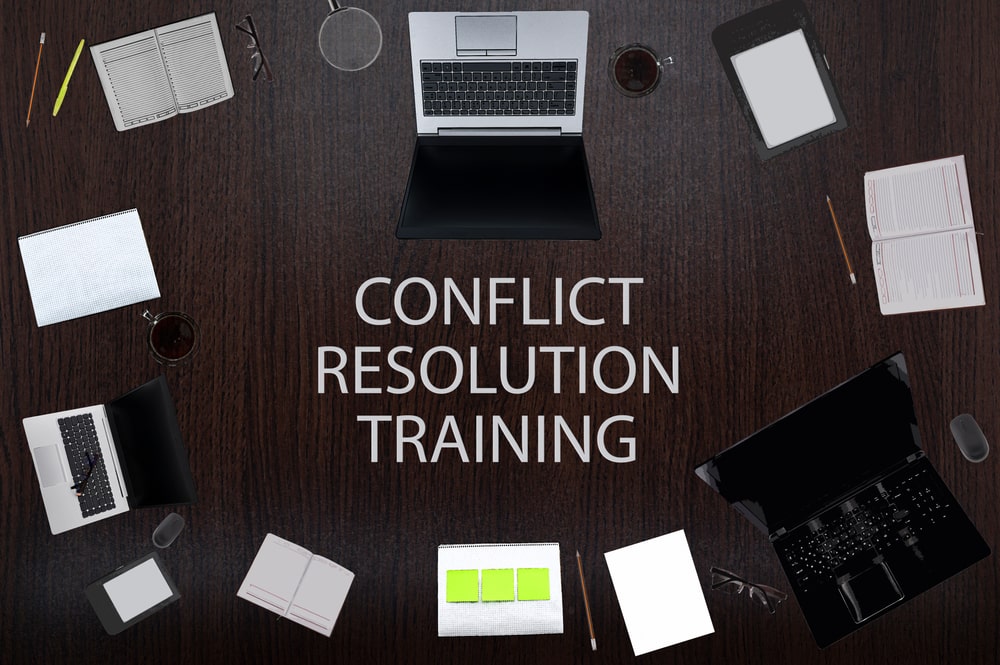Effective Conflict Management in Teams: Strategies for Success
Transforming workplace disagreements into opportunities for growth, innovation, and stronger team dynamics
Understanding Team Conflict
Conflict in professional teams is inevitable. When diverse individuals with different perspectives, work styles, and priorities collaborate, disagreements naturally arise. However, contrary to common perception, conflict isn't inherently negative—it's how teams manage these disagreements that determines whether they become destructive or constructive forces.
In high-performing organizations, conflict is viewed as an opportunity rather than a problem. When properly channeled, disagreements can spark innovation, uncover hidden issues, and strengthen team relationships. The key lies in developing a structured approach to conflict management that empowers team members to address differences productively.
Types of Team Conflict
Understanding the nature of conflict is the first step toward resolving it effectively. In professional settings, conflicts typically fall into several categories:
Task Conflict
Disagreements about how work should be performed, methodologies, or project approaches. These conflicts focus on the content of tasks and can often lead to improved outcomes when managed constructively.
Relationship Conflict
Interpersonal tensions between team members that may stem from differences in personality, communication styles, or values. These conflicts can be more challenging to resolve and often require emotional intelligence.
Process Conflict
Disagreements about how tasks should be delegated or how resources should be allocated. These conflicts often reveal underlying power dynamics or role ambiguity within teams.
Status Conflict
Disputes related to hierarchy, recognition, or perceived value within a team. These conflicts can damage team cohesion if left unaddressed but can also highlight needed structural changes.
Recognizing the type of conflict at play is crucial for selecting the most appropriate resolution strategy. Different conflict types require different approaches, and misdiagnosing the nature of a disagreement can lead to ineffective interventions.
The Cost of Unresolved Conflict
When teams fail to address conflicts effectively, the consequences can be severe and far-reaching:
- Decreased Productivity: Team members may divert energy away from tasks to focus on interpersonal issues
- Reduced Innovation: Fear of conflict can suppress diverse viewpoints and creative solutions
- Increased Turnover: Persistent unresolved conflict often leads to disengagement and attrition
- Deteriorating Team Culture: Ongoing tension creates toxic work environments that affect everyone
- Physical and Mental Health Issues: Chronic conflict can contribute to stress-related illnesses
According to research, managers spend approximately 25-40% of their time dealing with workplace conflicts. This represents a significant investment of organizational resources that could be channeled toward growth and innovation.
Effective Conflict Resolution Strategies
Developing a systematic approach to conflict management enables teams to address disagreements before they escalate. Here are proven strategies that successful teams employ:
1. Establish Clear Communication Protocols
Create structured channels for expressing concerns and resolving disagreements. Teams should develop explicit norms for:
- Providing constructive feedback
- Expressing dissenting opinions respectfully
- Escalating unresolved issues appropriately
- Maintaining confidentiality when needed
2. Practice Active Listening
Effective conflict resolution begins with understanding different perspectives. Active listening involves:
- Giving full attention to the speaker without interrupting
- Paraphrasing to confirm understanding
- Asking clarifying questions rather than making assumptions
- Acknowledging emotions while focusing on facts
3. Focus on Interests, Not Positions
Positions are what people say they want; interests are why they want it. Resolving conflicts effectively requires:
- Identifying underlying needs and motivations
- Finding common ground between seemingly opposing viewpoints
- Developing solutions that address core concerns of all parties
- Separating people from problems
4. Implement the Thomas-Kilmann Conflict Resolution Model
This framework identifies five approaches to conflict, each appropriate in different circumstances:
- Competing: High assertiveness, low cooperation (useful in emergencies)
- Accommodating: Low assertiveness, high cooperation (appropriate for preserving relationships)
- Avoiding: Low assertiveness, low cooperation (may be temporary strategy when tensions are high)
- Compromising: Moderate assertiveness and cooperation (useful when time is limited)
- Collaborating: High assertiveness, high cooperation (ideal for complex issues with time for resolution)
The Leader's Role in Conflict Management
Leaders play a pivotal role in establishing a healthy approach to conflict within teams. Effective conflict managers:
Model constructive conflict behavior
Demonstrate appropriate ways to express disagreement and resolve differences
Intervene appropriately
Know when to mediate and when to let teams resolve issues independently
Create psychological safety
Build environments where team members feel secure expressing concerns
Recognize conflict patterns
Identify recurring tensions and address systemic issues
Building Conflict-Resilient Teams
Beyond resolving specific conflicts, leaders should focus on developing team capabilities that make constructive conflict management part of the organizational culture:
Establish Team Norms
Collaboratively create explicit agreements about how team members will work together, make decisions, and handle disagreements. Revisit and refine these norms regularly.
Provide Conflict Management Training
Invest in developing team members' conflict resolution skills through workshops, coaching, and practical exercises that build confidence in addressing difficult conversations.
Implement Regular Retrospectives
Schedule dedicated time for teams to reflect on their processes, including how effectively they're managing disagreements and what improvements could be made.
Recognize and Reward Constructive Conflict
Acknowledge and celebrate instances where team members successfully navigate disagreements and emerge with stronger solutions and relationships.
Case Study: Transforming Conflict into Collaboration
A multinational technology company facing significant market pressure found that interdepartmental conflicts were hampering their ability to innovate quickly. Product development and marketing teams frequently clashed over priorities and timelines, resulting in delayed launches and internal friction.
The leadership team implemented a structured conflict management program that included:
- Cross-functional workshops to build mutual understanding
- Established clear escalation protocols for unresolved issues
- Trained team leaders in mediation techniques
- Created shared objectives that transcended departmental boundaries
Within six months, the company reported a 40% reduction in project delays and a measurable improvement in employee satisfaction scores. More importantly, the quality of collaboration improved as teams learned to leverage their diverse perspectives rather than viewing them as obstacles.
Technology and Virtual Team Conflict
As remote and hybrid work becomes increasingly common, teams face unique conflict management challenges in virtual environments:
Challenges in Virtual Settings
- Reduced nonverbal cues make misinterpretations more likely
- Asynchronous communication can delay conflict resolution
- Technology barriers may exacerbate frustrations
- Cultural differences may be less visible but equally impactful
Best Practices for Virtual Teams
- Establish explicit communication norms for digital interaction
- Schedule regular video check-ins to build relationships
- Create dedicated channels for expressing concerns
- Use collaborative tools that enhance transparency
Measuring Conflict Management Success
Organizations should track the effectiveness of their conflict management approaches using both qualitative and quantitative metrics:
| Metric Type | Examples | Measurement Approach |
|---|---|---|
| Team Performance | Productivity, innovation metrics, project timelines | Compare pre/post-intervention performance data |
| Team Climate | Psychological safety scores, engagement surveys | Regular pulse surveys, team retrospectives |
| Conflict Patterns | Frequency, escalation rates, resolution time | Track issues through formal resolution processes |
| Skill Development | Individual conflict competency, mediation skills | 360-degree feedback, skill assessments |
Frequently Asked Questions
How can I tell the difference between healthy and unhealthy conflict?
Healthy conflict is focused on issues rather than personalities, maintains respect for all parties, and is directed toward finding solutions. Unhealthy conflict involves personal attacks, emotional escalation, and an emphasis on winning rather than resolving the underlying issue.
When should leaders intervene in team conflicts?
Leaders should intervene when conflicts: 1) become personal rather than professional, 2) begin affecting team performance or morale, 3) involve power imbalances that make direct resolution difficult, or 4) violate organizational policies or values.
How can cultural differences affect conflict resolution approaches?
Cultural backgrounds influence how individuals perceive and respond to conflict. Some cultures value direct communication while others prefer indirect approaches. Effective leaders recognize these differences and adapt resolution strategies accordingly, emphasizing cultural intelligence as a key component of conflict management.
Can conflict ever be completely eliminated from teams?
No, and attempting to eliminate all conflict is counterproductive. Healthy disagreement is vital for innovation and growth. The goal should be to create environments where conflict can be expressed constructively and resolved effectively, not to prevent it entirely.
Conclusion: From Conflict Management to Conflict Transformation
The most successful organizations move beyond simply managing conflicts to transforming them into opportunities for growth and innovation. This shift represents a fundamental change in perspective—viewing disagreement as a valuable resource rather than a problem to solve.
By implementing structured approaches to conflict resolution, developing team members' conflict management skills, and creating cultures that embrace constructive disagreement, leaders can harness the creative potential of diverse perspectives while maintaining team cohesion.
In today's complex and rapidly changing business environment, the ability to navigate conflict effectively has become a critical competitive advantage. Organizations that excel in this area enjoy higher levels of innovation, stronger employee engagement, and more resilient team dynamics.
Develop Your Conflict Management Skills with Al Mithaq Institute
Al Mithaq Institute offers comprehensive training programs in conflict management, leadership development, and team dynamics. Our expert-led courses provide practical strategies that you can implement immediately in your organization.
For more information about our training offerings, contact us at info@almithaqinstitute.com or visit our website at www.almithaqinstitute.com.







